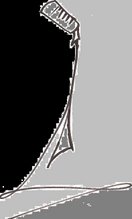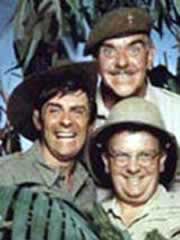
Thrown forward as one of the greatest self made singer/songwriters of the twentieth century, Elton John was, to most, that geeky, yet overly flamboyant looking guy in ’larger than life’ sized spectacles jumping wildly at a piano. Forever set in ebony and ivory along side the likes of Billy Joel and Stevie Wonder, these men were the innovators of the legendary MOR, or as we lesser mortals know it, ‘middle-of-the-road’ music.
After tripping over the writer, Bernie Taupin in 1967, the two were soon to become almost as household as the Lennon and McCartney machine. Shelling out bluesy rock, to prog, to slow, wrist slashing ballads was easy for the song writing duo and the uncontrollable mixture of the 1973 album, ‘Goodbye Yellow Brick Road,’ was no exception.
By the time of it’s release in October that year, Elton John had already enjoyed the splendour of having achieved one previous number one album, the undisputedly exceptional ’Don’t Shoot Me I’m Only The Piano Player,’ in February 1973 and five top ten singles. ’Goodbye Yellow Brick Road,’ was just another number one album it would have seemed, both over her and ’over there,’ where, in the U.S, it held the number one slot for an impressive eight weeks.
Presenting to us a Lowry tinged illustration on the front cover, Ian Beck provides, in my mind, the perfect setting for the musical content within. Showing us young ‘Elt’ stepping through a torn poster to another world, not unlike Dick Van Dyke in ‘Mary Poppins,’ it features a dazzling pair or red platform boots and a small wind up piano. Faded, deliberately, this album showed, even on first release, all the makings of what a classic album should look like. It is, a known thing that all the greatest albums ever recorded had such uniquely presented album covers. I can’t think of an album where this has not been the case.
This colourful album, in more ways than one, certainly can justify it’s proud place as being one of those great albums of all time. Lavish in it’s content, it glides through every possible genre worth trying. It proves to us that his music, only actually found in those early years, could be just as outrageous as his growing wardrobe. Mismatched and inconsistent it may be to the expertly trained ear, yet these little epics of genius observations over ride this potentially disastrous point and allow the album to stand a distinguished place in any diverse record collection.
However, on the flat side, it is dated and this is always a tough concept for a classic album to shake off. Many a listener under the age of thirty will happily dismiss this perfectly formed album as one of those records best left to Dad’s reflective moments, but even still, there is a lot to be learned from this dangerously arrogant legend in his young, free spirited youth. Let us not forget either, that this was Elton in his expressive, ‘couldn’t-give-a-monkeys’ era and long, long before the dreaded cartoon sound tracks…. Anything pre that first fateful collaboration with Sir Tim Rice, is worth listening to.
The first double album to have been produced by the artist, and agonisingly, not the last opens with the depressingly titled, ‘Funeral For A Friend.’ Introducing us to the very depressing bells, wind noises and organs that one would expect at a truly sad occasion, what we eventually hear is something, somewhat along the lines of Rick ‘The Rock Wizard’ Wakeman. It is Elton’s attempt at prog rock, ‘Yes’ style. Entwining swirls of screeching synths and whining guitars, it is a classic example of prog rock at it’s probable worst. Not everyone’s cup of tea, yet if The Alan Parsons Project lurks unintentionally within your record collection, then you should be pleasantly surprised.
‘Love Lies Bleeding,’ opens up the show which we will familiarise as the glam rock’ spirit of John in the glitter boot seventies. Other tracks on this same tinsel wrapped theme will present themselves as ‘Grey Seal,’ the tongue in cheek lesbian themed, ‘All The Young Girls Love Alice,’ the uncomfortably fast ‘Your Sister Can’t Twist,’ and the ever impressive, ‘Saturday’s Alright For Fighting.’ Yes, but not in those platforms, you don’t….
The reflective bug, that not just waves over Father’s across the world, also gave Elton John a quick slap on the back when we hear a strong throw back to the mellow, melodic 1972 album ‘Honky Chateau,’ in the tracks titled ‘Harmony,’ ‘Social Disease,’ and the biographical Monroe theme, ‘Candle In The Wind.’ These tunes, laced heavily with piano backing and lazy lyrics are probably the best of Elton John’s ballad work. Somehow, in those early years, he could create a soothing, yet dangerously meaningful song with very little around him. The only difference here, in the album as opposed to ‘Honky Chateau,’ is the featured element of strings. Given to these ballads in ‘Goodbye Yellow Brick Road,’ they result in a fullness and polished sound, thus pounding out the future path for famous John ballads and we came to love and hate. I personally enjoyed the slightly raw approach to the songs from ‘Honky Chateau,’ but it is, down to personal preference.
Reggae (I can see you cringing!) also makes a guest appearance on this eclectic album, although we are relieved when Elton decided not to take up the calypso way of life permanently. Strangled beyond recognition, the reggae, as we would know it, is trying it’s best to break out of the John piano mould.
Intended as a pun about a certain incident whilst recording the album from a Jamaican studio refusing to co operate, the track doesn’t work for me. Having said that, we must appreciate that this was as experimental that this songwriter was ever going to get after this moment, so we forgive him, just this once. ‘Jamaican Jerk Off,’ being the title, perhaps says it all about the general feeling of hardship being stuck in a hotel room writing, instead of being in a studio that simply would not play ball.
We can enjoy this musical roller coaster ride with great enthusiasm when noting it’s time and it’s artist. Surprisingly un commercial, it was complete breathing space for the artist at the most creative time of his life. Swamped in his later years by too much money and a regimental industry, artists over a certain age are simply not allowed to be free thinkers, well, not today anyway. Perhaps what we have here in this album is a big, oozing slice of music history. When we also remember who was around at the time with exceptional albums; Mike Oldfield, Genesis and the irrepressible Pink Floyd, it is then that we can slot ‘Goodbye Yellow Brick Road’ with placid ease.
It marks a certain point in experimental time. It’s just a shame that the music world today cowers at the sight of such expressiveness for there is no room for it anymore. Money and the proven fast making of the green stuff has pushed out the talent once and for all.
For this album, don a Caftan, light a joss stick and if you are a certain age, enjoy the trip back to a time when music was actually….well… music.
Music by Elton John and words by Bernie Taupin.
Elton John - piano
Davey Jonstone - Electric guitar/acoustic and backing vocals
Dee Murray - Bass and backing vocals
Nigel Olsen - drums and congas
DJM records 1973.
Recorded (eventually) at Strawberry Studios somewhere in France.
Bought on vinyl for four pounds, record collectors fair, South Coast.
©m.duffy 2006.
Saturday, November 10, 2007
High Powered Rocket Boots...
Posted by
Michelle Duffy
at
Saturday, November 10, 2007
![]()
Subscribe to:
Post Comments (Atom)






No comments:
Post a Comment